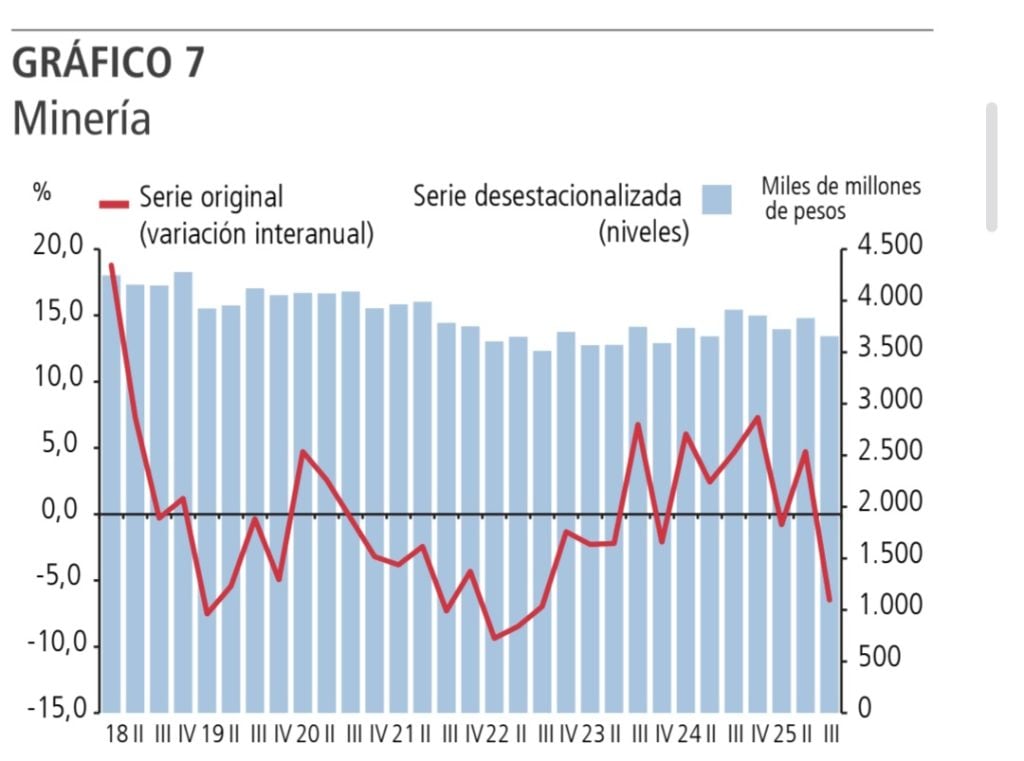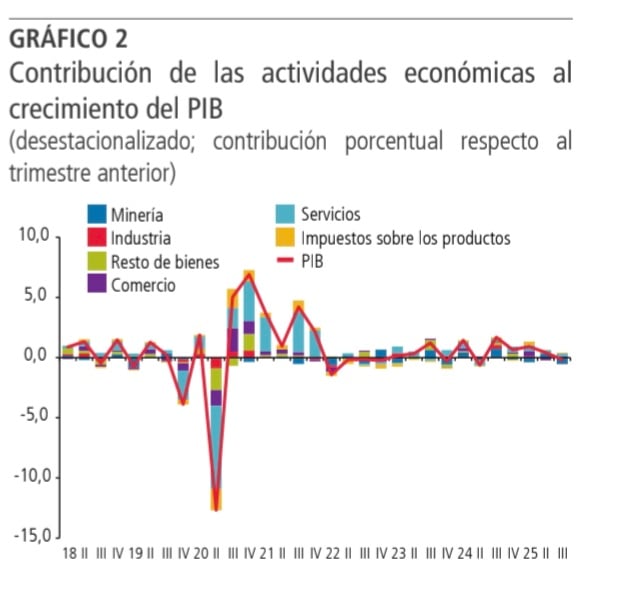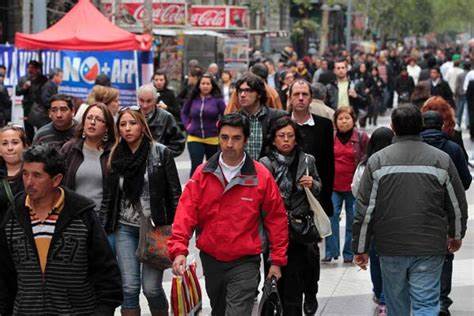Original article: Economía chilena crece solo 1,6% en el tercer trimestre y se frena por caída de la minería
The Chilean economy experienced an annual growth of 1.6% in the third quarter of 2025, as reported by the Central Bank, falling short of market expectations. This figure highlights a stark contrast between strong domestic demand and a downturn in the mining sector.
The Gross Domestic Product (GDP) growth of 1.6% from July to September compared to the same period last year was two-tenths of a percentage point below the 1.8% anticipated by analysts and indicated in the preliminary Imacec report.

This represents the weakest quarterly performance since April-June 2024, when activity grew by just 1.2%.
The Central Bank attributed this performance to «the updating of basic information for the creation of economic indicators and the reconciliation process of quarterly supply and use.»
Additionally, the National Accounts report indicated that the third quarter had one more business day than the previous year, contributing a calendar effect of 0.2 percentage points.
In a mixed performance context, the central bank revised upward the figures for previous quarters: the first quarter was adjusted from 2.5% to 2.6%, while the second improved from 3.1% to 3.3%.

Mining Slows Economic Growth
One of the key factors negatively impacting overall results was the mining sector, which saw a decline of 6.5% in the third quarter. This vital sector for the Chilean economy was primarily affected by lower copper production.
«Seasonally adjusted figures indicate that activity displayed a slowdown compared to the previous quarter,» the report stated.
It also noted that copper production was «impacted by lower ore grades and work stoppages recorded during the quarter,» while other activities increased due to gold and silver extraction, «a result of the commissioning of a new mining site.»
«In contrast, there was a decrease in lithium and iron production,» the central bank pointed out.

Investment and Consumption Remain Dynamic
Amidst the mining weakness, the economy found its main support in robust domestic demand, which showed a variation of 5.8%. This dynamism was mainly driven by two components: investment and consumption.
Investment increased by 16.1%, propelled by both gross fixed capital formation (GFCF) and inventory variations.
«Indeed, GFCF grew by 10.0% due to increased investment in transport equipment—trucks and buses—and electrical and electronic machinery. To a lesser extent, the construction and other works component also contributed to the outcome, led by engineering works,» the Central Bank noted.
The report indicated that the period saw a greater accumulation of inventories—particularly manufactured products—»which reached a trailing twelve-month ratio of 0.6 of GDP.»
Meanwhile, household consumption grew by 2.9%, with increases across all components. Spending was especially strong in services such as health, restaurants, hotels, and transportation, followed by non-durable goods like clothing and food, as durable goods rebounded with technology products.
Foreign Trade
The foreign trade sector showed uneven performance. While imports of goods and services increased by 12.8%, exports remained unchanged. Specifically, goods exports fell by 0.6%, mainly affected by a contraction in copper shipments, although there was an increase in gold, food, and chemical product exports.
Meanwhile, service exports experienced a growth of 4.6%, reflecting higher tourism spending.
On the other hand, imports of goods rose by 14.7%, led by the influx of machinery and equipment, particularly electrical and electronic equipment, trucks, and buses.
«Service imports also increased, particularly in business services,» the Central Bank pointed out.

Minister Grau Highlights Economic Dynamism
The Minister of Finance, Nicolás Grau, emphasized the positive aspects he observed from the central bank’s report.
In a statement issued to the press, the state secretary pointed out that «it was confirmed that the economy has been even more dynamic than previously thought.»
«In fact, it revised the growth upwards for both the first and second quarters. The second increased from 3.1% to 3.3%, and the first rose by one-tenth, which undoubtedly adds to the annual momentum,» he stated.
“In annual perspective, the GDP for the period from September 2024 to September 2025 grew by 2.9%, consolidating a robust and sustained recovery trajectory,” he emphasized.
According to Grau, “all these are clear signals that the Chilean economy is advancing with solid fundamentals and greater dynamism.”
“In the third quarter, the economy grew by 1.6%, driven by investment, activity, and household consumption,” he noted while expressing that the third quarter figure “is somewhat contained due to specific disruptions in the mining sector.”
“Without them, economic growth, meaning the non-mining GDP growth, would have been 2.6%,” he commented.











